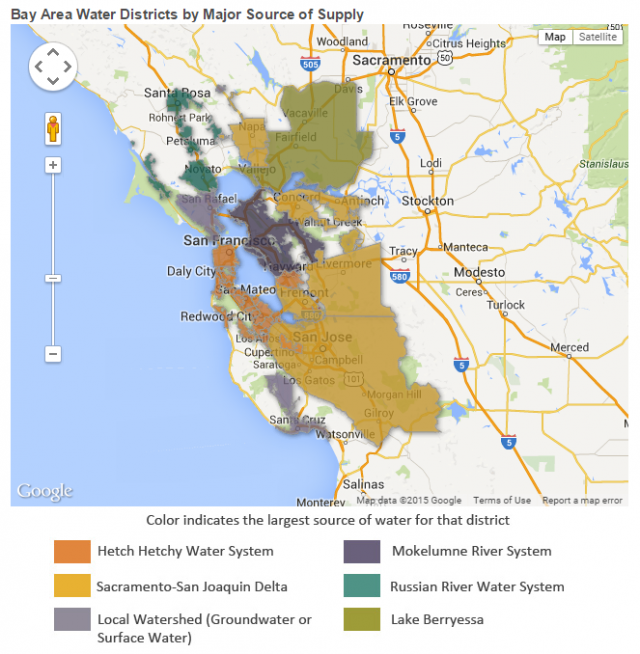Data source: California Department of Water Resources
Wet winter?
Talk about a rusty pipe dream.
After the driest winter on record, California is bracing for another hot, thirsty summer. Deep into the fourth year of its historic drought, with no relief in site, the state is frantically trying to figure out how to cope with a lot less water. Historically at this time year, California's reservoirs are bulging with plentiful winter rains and Sierra snow melt. Not so much these days. Water levels across the state at a record lows, with every major reservoir well below capacity, most less than half full.

This above map, created for The Lowdown by Bay Area web developer Victor Powell, shows fluctuations since 2010 in California's 30-largest reservoirs. Grey borders mark each reservoir's maximum capacity, while the blue shows fluctuating storage levels over time. All reservoirs are scaled relative to maximum storage capacity (with the largest -- Shasta Lake -- at 30 pixels). Click on each reservoir to see the change in capacity over the designated time period. View the changing percentages over time by hovering over the reservoir pop-out to the left of the graph. And use the slider at top to select specific time periods. Source code and data available here.
